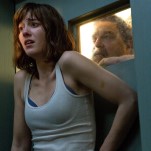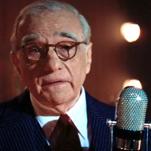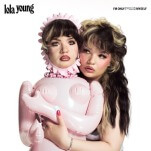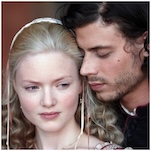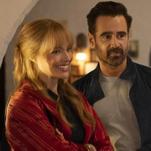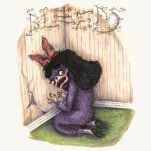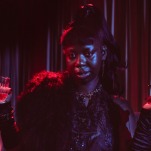Vehicles of Action: The Avengers vs. Mad Max
Two of the biggest Summer blockbusters are wildly different kinds of action film—Chet Betz looks at the kinetic art of each.
The action in Avengers: Age of Ultron is Hollywood. Joss Whedon’s film is a vehicle for his banter and for his thorough (if perhaps misguided) character juggling, but mostly for the demanding Marvel movie-verse agenda. As a transition between one of the most successful films of all time and Marvel’s absurdly stalled-for, two-part ace in the hole, Infinity War, Age of Ultron tries to find a way to do its interstitial narrative work while also trying to one-up the first Avengers film. This it does primarily through its action.
It gilds the lily brazenly. And while Ultron doesn’t classify as a turd, it gets the turd’s coat of polish. There is more action in Age of Ultron than in any other Marvel film—there are more money shots, and if you thought NYC got banged up, wait until you see the hang time an Eastern Bloc city’s got when androids dream of devilry. The film’s strongest when it’s just having fun and not trying to wow you with the results of millions of man hours behind computer screens. In fact, for all but the Marvel devout, The Avengers Do Vegas might have been just as enjoyable, if not moreso. Because the action in Ultron isn’t bad, it’s just emblematic of its industry.
Whereas, the action in George Miller’s Mad Max: Fury Road is a thing of beauty, poetry, rhythm and detail and momentum. The film is action—it understands the geography, the ballet of it. Excruciatingly, it executes its craft with a lot of real shots of real vehicles and actors and brave, brave stunt players doing mad things for real cameras, which accomplished cinematographer John Seale guides to giddy heights. The unholy crusade of such a venture bleeds gasoline dreams and literal buckets of sweat, and it pours all that into the engine of the film’s final cut, finely tuned by editor Margaret Sixel. Fury Road understands how action itself can be a vehicle that with breathless pace carries forward narrative and character and theme inside of it—its passengers rather than its burden of a load, driven by those things even as it drives them forward—into the realm of the tragic, the mythic and the indelible. What’s that? The rattling, guzzling maw of our mortality and our sentience waging war.
Miller came out of the raw DIY dirt of the Mad Max trilogy’s desolate dawn and then made some kids and then made kids’ films. Some good kids’ films because, let’s be real, Babe: Pig in the City is a jam, but still there’s that feeling of repression there. And yet in this 30-year hiatus from Max you can see where carefully storyboarding talking pigs and dancing penguins lends to the craft in Fury Road even as the repression lends to its insanity, it’s joie de vivre via monster trucks and war rigs, its grotesquerie and somehow lived-in imagination, its unhinged exuberance for the dark side of glory.
It is Post-Apocalypse: The Rock Opera. Pounding drums march before valor bathed in doom. A pallid guitarist shoots flames with fiery licks. There’s a scene in Fury Road where War Boy Nux (Nicholas Hoult) watches his compatriots tossed about in wreckage and flames by a mother of a funnel cloud and the shot holds, holds, holds on out until the last rag-doll victim is flung across the path of Nux’s car, flames nipping in the air behind him, while Junkie XL’s score swoons with odd awe. You might describe it as a Pyrrhic moment, Miller reveling in the work of his FX team and the score provided and letting death be glorified so that the viewer can inhabit the mindset of the kamikaze, the suicide bomber, the monkey controlled by religion, promised Valhalla: Nux in his car, pulling gas lines, spraying his mouth with chrome in prep for his passing into legend, now exclaiming, “What a day! What a lovely day!”
In Age of Ultron, when you see a horde of CG robots you are supposed to marvel because, gosh, look at that horde of robots. The theme here is matter-of-fact: Geek out while you watch millions of dollars poured into realizing comic book fantasies. The most visually intense parts of these Marvel films are, for all intents and purposes, being directed by a committee, a community of people, influenced by decades and decades of comic book art and by cinematic forebears and by each other and whatever else Marvel is working on—and this aesthetic stews down, simmers down, into the same clarified butter. Now pour it on your popcorn. At one point Ultron, the monstrosity borne of artificial intelligence birthed by Tony Stark (Robert Downey, Jr.), chops off Andy Serkis’s arm. Andy Serkis runs away. The uninformed can only assume he is going to become some important, robo-armed villain in Iron Man 4 or it was just another moment of pointless visual porn in a film stuffed to its brim with that kind of thing. But then compare this to the lack of arm/robotic arm for Fury Road’s protagonist Imperator Furiosa (Charlize Theron) and how both sides of that coin figure integrally but subtly until delivering the film’s key fist-pump moment.
Fury Road’s vehicular action is spectacular and, honestly, some of the best that cinema has ever given us, but there is a Max vs. Furiosa hand-to-hand skirmish that would be a real shame to overlook. Not only is it executed with the same ferociously controlled power of the rest of the film’s action, it elegantly carries its characters and narrative forward. Up until this moment, Nux and Max had been enemies, Max a kidnapped and belittled “blood bag” for the War Boy driver (these soldiers drawing near-spiritual sustenance from such human vessels), but as the action of Max vs. Furiosa unfolds, Nux perceives what he thinks to be an ally in gratifying his leader and god, Immortan Joe (Hugh Keays-Byrne). The film swiftly makes that transition for Nux as he is still chained to Max, and in their newborn alliance creates a dynamic with the blood transfusion chain that binds them. The chain goes from a handicap, an obstacle for Max’s fight with Furiosa, to an aid as they use it to trip her. This scene culminates in Max firing warning shots at one of Immortan Joe’s refugee brides/breeders, Splendid (Rosie Huntington-Whitely), and wounding her calf. It is a minor injury but one with major repercussions later in the film. In Fury Road there are a lot characters and a lot of shots fired, but every one of them matters, and for every action there is a reaction. These actions and reactions form a narrative nucleus that fissions and fusions into pure cinematic energy at the end of the film’s two hours.
-

-

-

-

-

-

-

-

-

-

-

-

-

-

-

-

-

-

-

-

-

-

-

-

-

-

-

-

-

-

-

-

-

-

-

-

-

-

-

-


